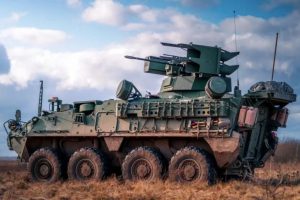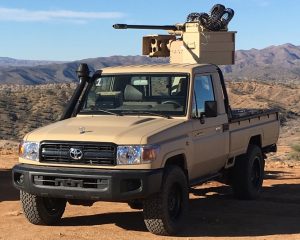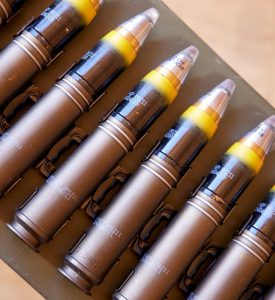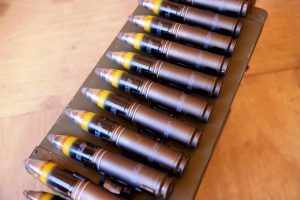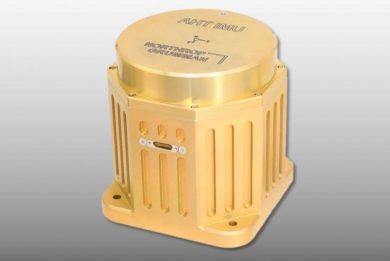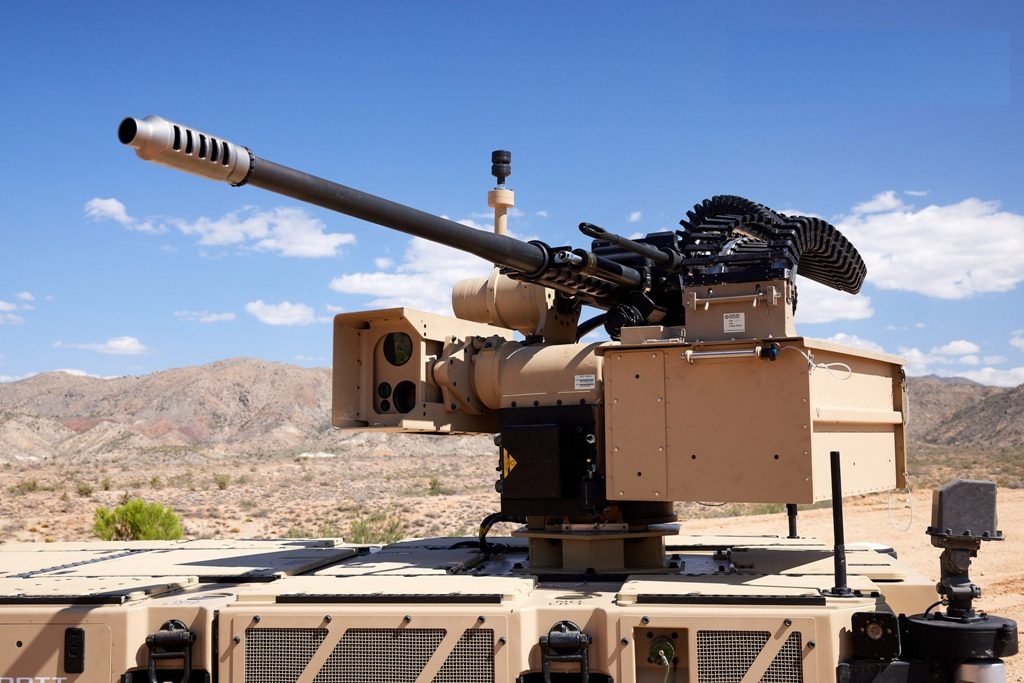
Northrop Grumman: new life to the M230LF
While the number of M230LF cannons is increasing among the US military, a number of international customers are showing a strong interest in the 30×113 mm light weapon originally developed to become the automatic gun installed on the AH-64 Apache helicopter and then declined in the link-fed version for land and naval role, John McCollum, Director Business Development of the Guns Operating Unit at Northrop Grumman stated during an online update briefing.
Following the M230LF fielding in theatre in different roles the US military, which call it XM914, issued a Request for Information for additional M-LIDS (Mobile-Low, slow, small unmanned aircraft Integrated Defeat System) in which the Northrop Grumman chain gun finding is the hard-kill Counter-UAS effector. With a weight less than 73 kg without ammunition and a recoil force of less than 7,400 N, it can be fitted to many RCWS designed for hosting 12.7 mm heavy machine guns. The M230LF chain gun can shoot single shot, controlled burst, and full automatic, in the latter mote the firing rate reaching 200 rounds per minute, and provides a lethality range of over 2,000 meters.
To provide a multirole capability to the Apache, a High-Explosive Dual-Purpose (HEDP) round was developed, which proved to be effective also against Class 1 UAS, Michael Hafften, Director Business Development for Ammunition at Northrop Grumman said, this munition ensuring good performances against medium armoured vehicles while maintaining a fragmentation effect.
However to improve the M230LF effectiveness against UAS and to further widen its capabilities, a number of improvements both in the weapon and in the ammunition are in the pipeline.
One of the first issues was linked to potential interferences with the electrically priming system by electronic warfare systems and radars, which are typically installed on RCWS dedicated to the C-UAS mission. To mitigate this issue some 18 months ago the M230LF was made available in the percussion prime version, Michael Hafften explained.
Aversion of the HEDP ammunition with self-destructing capability was developed following a Joint Urgent Operational Need; known in the US Army as XM1198 HEDP-SD, US DoD documents indicate that it was fielded in FY 21, a Training Practice version being also available.
However, to counter the UAS threat Northrop Grumman, in conjunction with the US Army, developed an airburst round fitted with a radio-frequency proximity fuse that ensures a good hit-to-kill capability also thanks to the fragmentation effect of the warhead, Michael Hafften said. This round is now transitioning into production and is starting to be deployed with US forces, which call it HEP (High Explosive Proximity) XM1211. Adding a proximity fuse inevitably increases the cost of the single round, however this remains well beyond that of a Coyote suicide UAS or a Stinger missile used against unmanned air vehicles of the lower classes. Moreover Northrop Grumman developed automated production lines in order to drive down the cost of such proximity fuses. EDR On-Line understood that a very short burst, two to three rounds, is needed to obtain a high kill probability against a single Class 1 and Class 2 UAS. This allows being able to deal with multiple targets, considering the considerable number of ammunition usually available. The US Army has already addressed the swarm issue, a number of tests having been conducted at the Yuma Proving Ground against small groups of USA, however no tests have yet been conducted against large groups, 100 or more airframes, due to cost issues. Michael Hafften underlined that the results obtained were fed into the company modelling and simulation system, where virtual tests against large swarms were conducted with a significant level of effectiveness, according to the Northrop Grumman representative.
Adding new ammunition types makes the M230LF a truly multirole system, however switching from one ammo type to another while in operation takes some time, while targets of different types can materialise suddenly leaving very short warning time, another solution being to feed it with mixed rounds belts, where however proximity rounds may be wasted against targets that do not require such type of ammo. To solve this issue Northrop Grumman is developing a dual-feed solution which prototype should be available in Q1 24. The gunner will then have a selector allowing him to switch nearly instantaneously between two types of rounds.
Further developments in the ammunition domain are underway. A programmable airburst munition is being designed, adding the capability to hit targets in defilade, such as infantry behind cover. Northrop Grumman is also working on a guided munition, Michael Hafften explained, this programme being run in conjunction with the US Army and the US Navy. The aim is to extend the proximity technology to a new level of guidance that would bring the round closer to the target extending lethality. Currently the guided ammo development is at TRL5, the company aiming reaching TRL7 demonstration in 18 months time.
Northrop Grumman is also developing different types of warheads optimising the fragments dimensions and weight in order to cope with different types of targets, increasing lethality as much as possible.
Beside the 30 mm M230LF, Northrop Grumman is developing a 20 mm version known as Sky Viper. According to the company the programme was delayed due to funding issues, but these have been now solved and it will be restarted in early 2023, a prototype being awaited in the next 18 months. This cannon is being considered as an alternative weapon for the US Army Future Attack Reconnaissance Helicopter. Considering cost-benefit issues it is improbable that proxy-fused or smart ammunition will be developed for this weapon, which will rely on high fire rate for neutralising conventional targets, Northrop Grumman considering the C-UAS mission best fitted for smart 30 mm rounds.
Photos and videos courtesy Northrop Grumman

